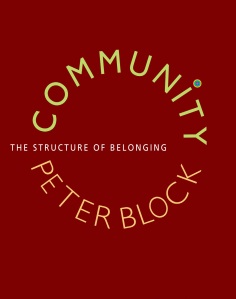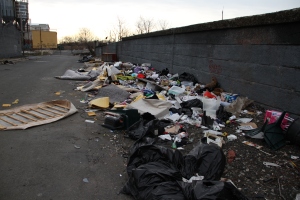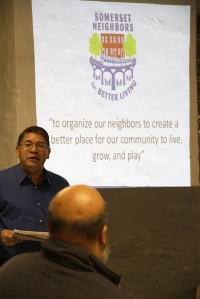We originally proposed the idea of a “brainstorming” workshop to partner organization New Kensington Community Development Corporation (NKCDC) when they were looking for feedback on a town watch and phone tree system to report crime in the Kensington, Philadelphia neighborhood. Crime is a huge problem in this area and it is important to create a sense of anonymity so that neighbors can feel comfortable reporting incidents. Many are scared that they will be targeted for snitching. There is already concern that the town watch system would not be the ideal solution. NKCDC needed input from the greater community on ways in which we could either improve on these existing models or create new ones all together.
We started researching ways to engage the community in a conversation where they could explore opportunities to make their neighborhood safer. We examined the current layout of the space used to conduct the monthly meetings and saw an opportunity to start there. In order to engage people in conversation we needed to shift the layout from a lecture setting to either a small group setup or one large circle so the residents could face each other. We decided that the large circle would not allow everyone to have an equal voice and decided on four small groups that would each surround a table.
The workshop that MiD attended with Peter Block informed our concept approach to engaging community members in a meaningful conversation. Block emphasized asking thought provoking questions and focusing on an individual’s assets. We knew that in order for this community to begin to feel united and less fragmented, they would need to understand the commonalities among themselves. Once that is established the residents can begin to concentrate on the “gifts” that they, as individuals, bring to their neighborhood.
The next step was to think about the actual interaction:
Would it be heavily facilitated?
Who would facilitate?
What scaffolding did this particular community need?
What were other obstacles that may keep them from opening up?
These were all questions that needed to be considered as we examined this engagement. We took some time to examine the Peter Block workshop more and how design can be applied in this context. We observed that there was no way to capture what was being said in our small groups and no way to continue this momentum.
This is something that differentiates the work we are doing as designers. Not only are we creating situations where meaningful conversations can take place but we are creating materials that act as boundary objects for create a shared understanding but also capture the outcomes produced. This is important in order to generate some type of follow up action. Our goal in the work we are doing for our thesis is to design an interaction where the greater community has a voice and feel empowered to then take action.











